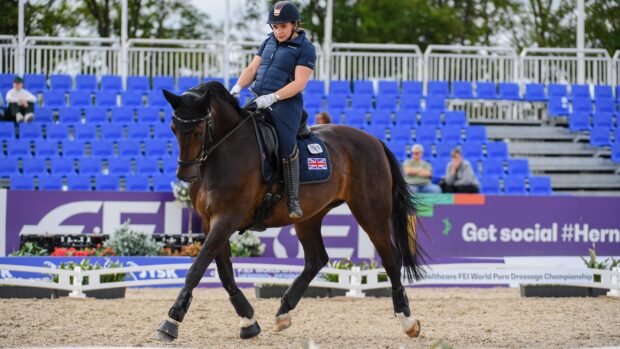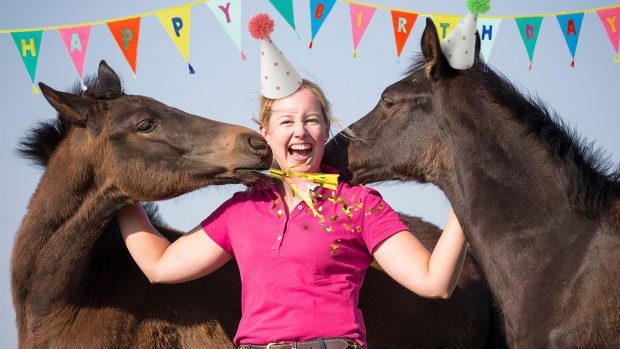A heated debate is underway about the decision to remove the whip from Rachael Blackmore’s hand in a poster promoting the Cheltenham Festival. Here is H&H’s Editor-in-Chief’s view...
In an era where Roald Dahl’s work is being rewritten, and those with a vested interest edit picture archives to remove images that could be deemed to bring their sports into disrepute, is it surprising that those marketing a highlight of the racing calendar to the wider public on London underground might choose to airbrush out a whip brandished high in a winning jockey’s hand? If only to take the wind out of the sails of some who will wade in on every posting of the picture to highlight the “cruelty” of whip use in racing, and perhaps get those on the fence thinking again about whether to attend. Many in the racing world are up in arms about it, and understandably so, but can we really be that surprised?
For those who view a whip, used correctly, as no different or more controversial a piece of kit than a riding boot or a glove, it might seem unfathomable to delete it. But in terms of public perception, it’s probably not ideal that the whip is understandably held aloft at the finish in celebration, since for those who dislike the use of whips at all in horse sport, its prominence in these images is a red rag to a bull.
But by airbrushing the whip out of an image, the implication is that we are ashamed of its presence, that we would rather it wasn’t there. And if we don’t want it there, then it shouldn’t be permitted in the sport. We can’t both accept the whip’s appropriate use in sport and then want to hide its presence in marketing, however prominent.
Is there such a lack of understanding that the uninitiated might mistake it for being used from that high position? Is that the marketer’s concern?
Is it necessary to remove something that is absolutely fine, but doesn’t look great if you don’t know that it is fine? I can see how we ended up here.

The irony is that if this whip has been removed from the marketing image to avoid hot discussion of its use in racing, it has not had the desired effect – in fact, it’s done the opposite. I have empathy for the people who made the decision. Sometimes you can’t do right for doing wrong, and it’s far easier to sit and point the finger than get it right yourself every time.
I also have empathy for what the British Horseracing Authority is trying to do to future-proof its sport. Nobody would thank them for sitting back and watching public acceptance of racing slip away.
Some ask if things like the removal of the whip here are overkill; how much does the public care? There are surveys suggesting many do care quite a bit, but are they only completed by people who care quite a bit?
We at Horse & Hound have been criticised, too, for drawing attention to the fact that without public acceptance of our sports, we cannot assume they will continue indefinitely. That perception does matter. There are those who think the problem isn’t real, or is small, and wouldn’t exist if we didn’t write about it. Happy days if that’s the case.
If there is a risk, surely we are better to try to tackle it, understand precisely, with science, what is and is not a welfare issue, and legislate accordingly? We could explain that to the public, too, though I don’t find telling people they are wrong, however carefully or scientifically you do so, is ever well received. But we can demonstrate good practice, and throw the book at bad practice.
There’s another consideration, too. The image has been cut out, and placed on a blue background. From a designer’s point of view, it’s a lot neater not to have the whip stuck out.
We might tidy a horse’s mane if a section is sticking up, or remove a noseband strap that is protruding, or a loose boot strap, on an image in our magazine. We’ll take out a mast or a spectator if the words on the cover will read better off a grass background than a mottled one. There are reasons for editing images that are not controversial.
But we wouldn’t airbrush out a whip on the front cover, tempting as it might be for neatness and legibility, because the inference would be that we are ashamed that it is there. Because like it or not, and whether those in the industry can understand it or not, the whip is a controversial object to many, not a boot or a glove.
Do I think it was the right decision to remove this whip? No. And I imagine the people who did so are rueing that decision, because hindsight is terribly helpful. But I can see why someone might have thought it was a good idea at the time – and nobody minded or cared for the first few months of its existence. The fact this poster is under discussion now highlights the complexity of the era we are in, and the challenge of such polarised views in the horse world and wider society, where racing is uniquely placed. It will take careful navigating.
You may also be interested in…

Kim Bailey on racing’s new whip rules: ‘Public perception is everything’

*Opinion* Scaremongering clickbait, or a very real threat to the sport we all love?

Davy Russell: ‘Education is vital to improve whip use, not continually changing the rules’

Last-minute changes to new whip rules for 2023

Subscribe to Horse & Hound magazine today – and enjoy unlimited website access all year round
Horse & Hound magazine, out every Thursday, is packed with all the latest news and reports, as well as interviews, specials, nostalgia, vet and training advice. Find how you can enjoy the magazine delivered to your door every week, plus options to upgrade your subscription to access our online service that brings you breaking news and reports as well as other benefits.





